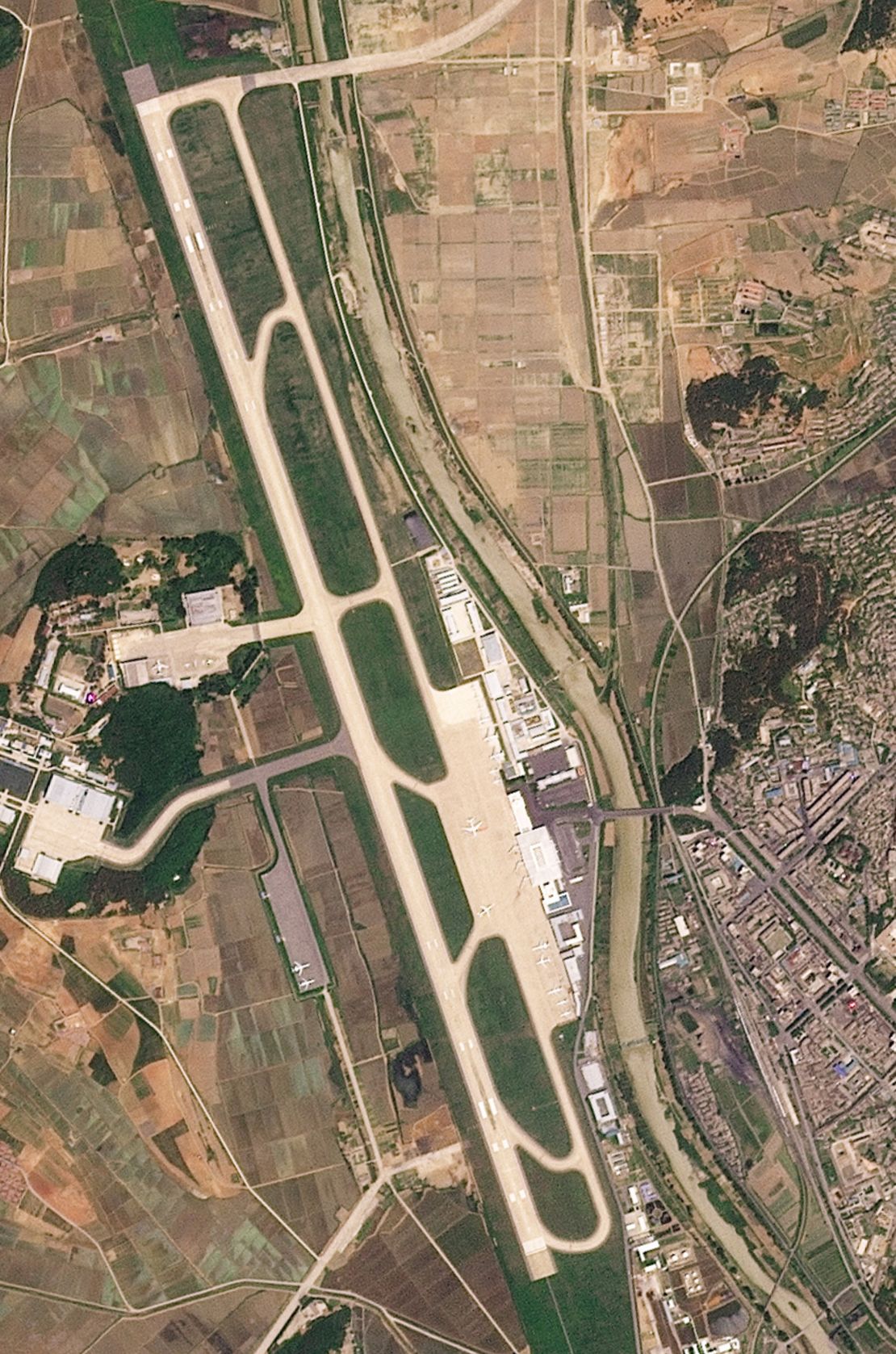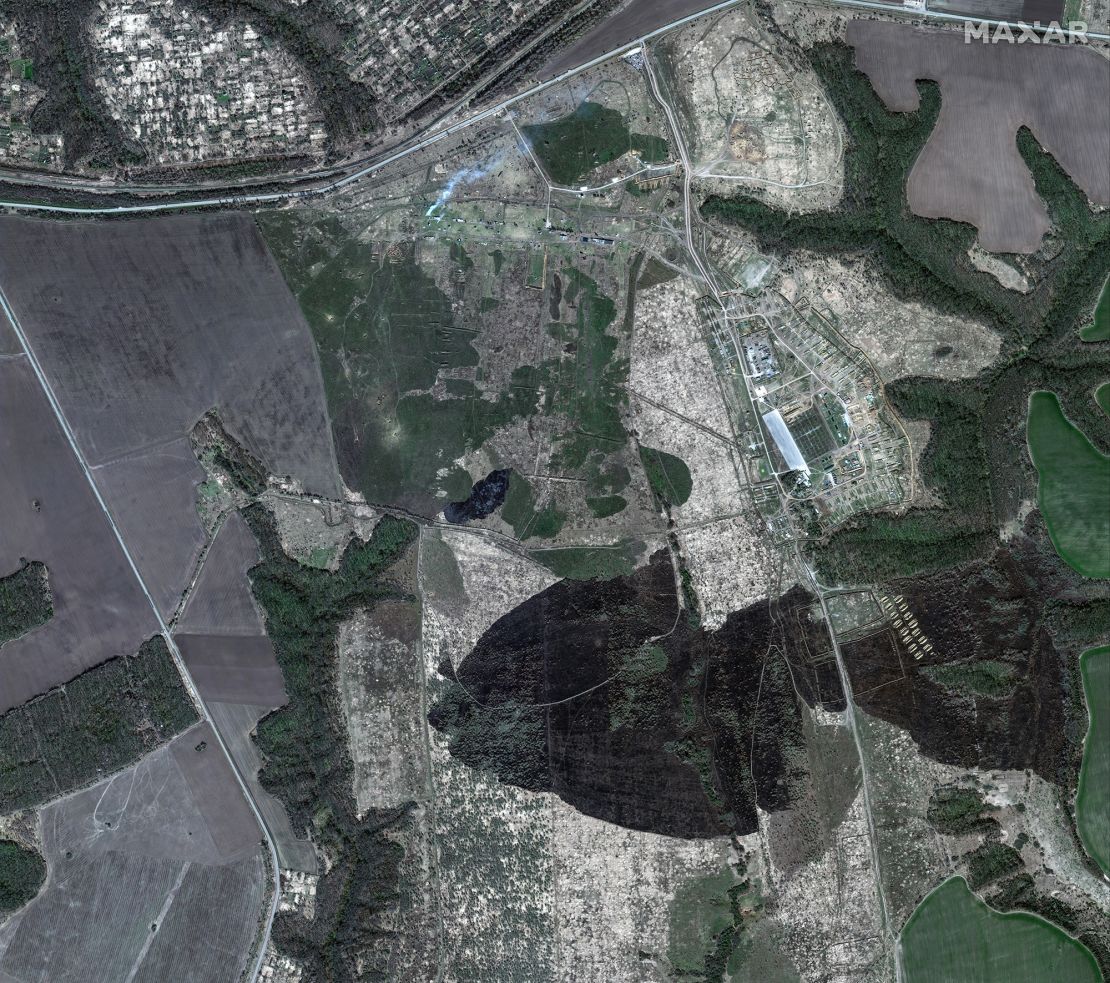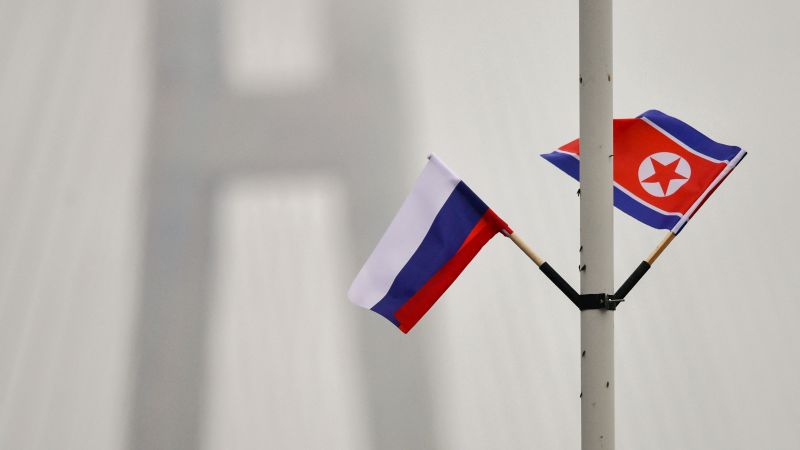Kyiv
CNN
—
North Korea is set to triple the number of its troops fighting for Russia along the front lines with Ukraine, sending an additional 25,000 to 30,000 soldiers to assist Moscow, according to an intelligence assessment from Ukrainian officials.
The troops may arrive in Russia in the coming months, according to the assessment seen by CNN, adding to the 11,000 sent in November who helped repel Ukraine’s incursion into Russia’s Kursk region. Around 4,000 of those North Korean soldiers were killed or injured in the deployment, according to Western officials, yet Pyongyang’s cooperation with Moscow has since bloomed.
The Ukrainian assessment seen by CNN says the Russian ministry of defense is capable of providing “needed equipment, weapons and ammunition” with the aim of “further integration to Russian combat units.” The document adds “there is a great possibility” the North Korean troops will be engaged in combat in parts of Russian-occupied Ukraine “to strengthen the Russian contingent, including during the large-scale offensive operations.”
The assessment also says there are signs that Russian military aircraft are being refitted to carry personnel, reflecting the vast undertaking of moving tens of thousands of foreign troops across Russian Siberia, which shares a border with North Korea in its far southwest.
Possible preparations for the new deployment, including the arrival of a ship linked to last year’s deployments at a Russian port, and cargo aircraft at North Korea’s Sunan airport, have been spotted on satellite imagery obtained by CNN.

North Korea initially sent 11,000 troops to Russia in the fall of 2024 in great secrecy, with Russian President Vladimir Putin only confirming the deployment in late April.
In October, North Korean soldiers were pictured being handed equipment for the frontlines at the Sergeevka military base in Primorskyi Krai.
A month later, a Ropucha-class Russian ship docked at the Dunai port near Nakhodka, 95 kilometers (59 miles) to the southwest, which could carry up to 400 troops, analysts said.
The same type of troop-transporting Ropucha ship again docked on May 18 at the same Dunai port, according to satellite images supplied to CNN by the Open Source Centre, a UK-based non-profit specializing in open-source intelligence related to defense and security.

Flight patterns also suggest the movement of some more troops could also be under way. The Open Source Centre supplied CNN with satellite imagery from the Sunan airport in North Korea on June 4, in which cargo planes, possibly IL76s, were taxiing on the tarmac – the same type of aircraft used in last year’s deployments. While imagery does not show what the ship and the planes are being used for, the movements could suggest a pattern consistent with what analysts observed last year.
“Satellite imagery shows a Russian personnel carrier arriving at Dunai in May, and activity at Sunan airport in May and June,” said Joe Byrne, senior analyst at the Open Source Centre. “This appears to indicate the routes previously used to move DPRK troops are active, and could be used in any large-scale future transfer of personnel.”
Jenny Town, senior fellow and director of the Korean program at the Stimson Center, said the Ukrainian assessment of up to 30,000 sounded “high… but they can certainly come up with that number. They won’t be elite soldiers. Kim Jong Un has said he is all in, so it depends on what Russia has asked for.”
Town said 10,000 to 20,000 “sounds more realistic,” and that North Korea might slowly deploy the troops in stages. “There have been rumors that Russian generals have been inside North Korea training troops there already,” she said.
Ukraine’s Defense Minister Rustem Umerov said Thursday that Kyiv suspected further North Korean troops might be deployed but added that the country’s leader, Kim Jong Un, risked putting his own government in peril by exposing so many elite troops to the high casualty rates of the front line. “Russia’s use of elite North Korean troops demonstrates not only a growing reliance on totalitarian regimes but also serious problems with its mobilization reserve,” Umerov said. “Together with our partners, we are monitoring these threats and will respond accordingly.”
On Friday, Ukraine’s military chief, Oleksandr Syrskyi, said Russia was amassing 110,000 troops near the front-line hotspot town of Pokrovsk, in preparation for a possible offensive on the strategic population center.
Sergei Shoigu, a top adviser to Putin who previously served as his defense minister, visited Pyongyang on June 17 – a trip made on Putin’s orders, and his second visit in a fortnight, the Russian state-run TASS news agency reported. During the visit, Shoigu announced 1,000 North Korean sappers and 5,000 military construction workers would be sent to Russia, to clear mines and “restore infrastructure destroyed by the occupiers” in the Kursk region, according to TASS.
South Korea’s National Intelligence Service (NIS) has briefed lawmakers in Seoul that North Korea has begun selecting personnel for overseas deployment which could occur as early as July or August, according to remarks by lawmaker Lee Seong-kweun. He highlighted Russia’s public announcement of another 6,000 North Korean mine clearers and military construction workers being sent. It is unclear if the NIS shares the Ukranian intelligence assessment that the deployment could be as many as 30,000.

Reports in Russian media have also hinted at intensified cooperation. A video from a Russian TV presenter and politician, Marina Kim, posted on Telegram two days after the Kremlin admitted North Korea’s role in the war in late April, shows the intensive preparations and long-term dugout accommodation of one North Korean unit. CNN and the UK-based Centre for Information Resilience have geolocated the facility to a field outside of Postoyalye Dvory, a settlement 10 kilometers (6 miles) east of the city of Kursk.
The six-minute video shows a Russian military instructor declaring that North Koreans aged 23 to 27 arrive “physically well-prepared.” He added, “As fighters they are not worse than ours. The enemy runs away first.”
The Russian trainer discusses with Kim a translation sheet of basic military Russian terms to Korean. It is unclear if the North Korean trainees are new arrivals or the remnants of the 11,000 sent last year. The reporter also visits a trench network where the North Koreans live with basic comfort items such as red Korean pepper, and handwritten posters declaring in Korean “Revenge for our fallen comrades” above their bunks.
Another two videos posted by TASS imply greater integration of North Korean soldiers into the Russian military than was previously seen. North Korean troops’ first exposure to the front line in Kursk was as a distinct, separate unit, owing to the language barrier with Moscow’s troops, according to assessments by Ukrainian officials.
One TASS video shows North Korean and Russian troops working to clear buildings together in close-combat training, and another shows North Koreans receiving training with shotguns, used to tackle the Ukrainian drone threat.
The additional troops mark a significant development in the conflict, and a sign that North Korea’s leader is doubling down on his support for Moscow. Kim Jong Un was seen on North Korean state media inspecting North Korean special forces on May 14, leading some analysts to suspect the visit was related to a future deployment. The revelation of what appears will be a major North Korean deployment is part of a month-long CNN investigation into North Korea’s widening role in support of Moscow’s war.
Ukrainian intelligence also supplied the most complete record yet of the 82 strikes by North Korean KN-23 and KN-24 ballistic missiles, revealing one was responsible in January 2024 for the deaths of 11 civilians in Pokrovsk, and their intense use in February this year. Their pattern of use has been detailed by CNN.
CNN has also obtained from an official in Ukraine’s defense intelligence directorate training manuals for North Korean artillery, translated into Russian, a sign of both the ubiquity of the weapons and the increasing interoperability between Moscow’s and Pyongyang’s armed forces.
The manuals have emerged at the same time as increasing numbers of videos of North Korean artillery at the front line have been seen online, and as a report from 11 UN member states last month said that Pyongyang had sent at least 100 ballistic missiles and 9 million artillery shells to Russia in 2024.
The report also echoed statements from the South Korean military in March that another 3,000 North Korean troops had been sent to Russia early this year.
Town, from the Stimson Center, said Pyongyang saw a long-term benefit to Moscow being in its debt. “The more ‘blood debt’ there is between them,” she said, “the more North Korea will benefit in the long run, even if they are making sacrifices in the short term.”

